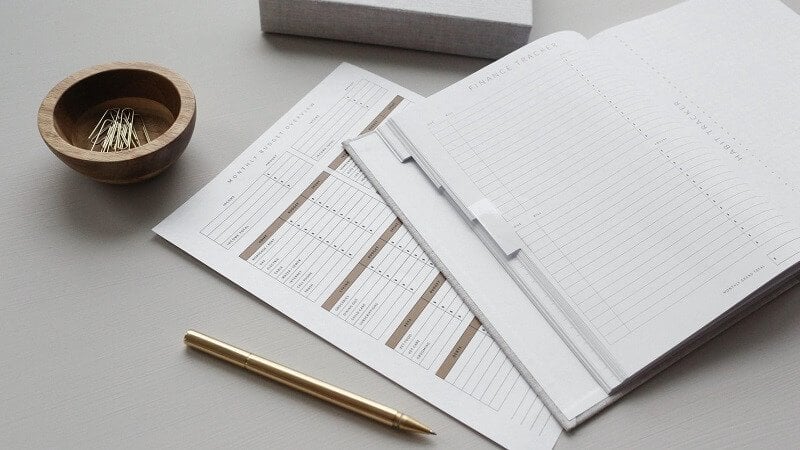
Investors that are buying securities do that by using brokerage accounts.
There are two main types of brokerage accounts but they are not the same, there is a difference between a cash account and a margin account. The most obvious is in its monetary requirements.
What is a cash account?
When using a cash account, all transactions have to be done with cash. In investing this represents a long position. As an investor, you must deposit sufficient cash to settle the trade. The other way to trade in a cash account is to sell your existing position but on the same trading day. Only then you’ll have available cash to settle the trade.
A cash account is quite simple.
With your permission, all or part of shares you own and hold on a cash account a broker can lend to the third party. This could be a smart decision since it could provide you the extra gains. This situation is known as share lending or securities lending. Moreover, if you hold the securities that are hard to borrow, your profit could be even more significant. There are always a lot of short-sellers that are in need of good stocks but don’t have enough money to buy them. Also, hedge funds are always interested in borrowing securities.
What is a margin account?
When you open a margin account you’ll have a chance to borrow and buy a new position or sell short. Actually, by using a margin account you’ll leverage your position and profit from betting against the value of the assets in the account. You can also use a margin account to withdraw cash. It would be some kind of loan. If you want to leverage your position, a margin account could be useful.
For example, by using a margin account you could take a short position in the stock that you believe the price will fall soon. When it happens, you’ll cover your short position by taking a long position in the same stock. This could be beneficial if the market goes in your direction because you’ll take profit on the difference between the cost of the initial short sale and the cost of stock bought at a lower price for your long position.
Where is the difference between a cash account and a margin account?
If you use a cash account for this action, you’ll need some strategy to hedge the income because you can use only cash for long positions. For example, you may set a stop order to sell the stock if it falls below a specific price. That will limit your downside risk.
On the other hand, a margin account must keep a certain margin ratio all the time. If the amount on your account drops below the limit, your broker will issue a margin call. This means, your broker will demand more securities or cash in order to get back the account value within determined limits. To maintain this amount you’ll need to add fresh cash or to sell some of the securities you already hold.
The key difference
To put a long story short, the main difference between a cash account and a margin account is that cash accounts don’t allow you to use the vast range of financing vehicles. You’ll not get a chance to borrow for investing. If you want that, you’ll need a margin account. Also, there are some other circumstances where you’ll choose to use a margin account. It isn’t convenient for investing only.
Opening a margin account means a credit arrangement with a broker. The benefit is that you can use the margin in various different ways.
What a margin account allows you?
The most important, a margin account allows you to borrow against the value of your stocks and make more investments. A margin account gives you the leverage since you can buy more assets than it is possible with the cash you have. Yes, the broker will take an interest in the margin loan. Limits on a margin loan may vary from broker to broker. But most of the brokerages will allow you to borrow up to 50% of the worth of your investments. Also, talk to your broker because not all your investments are fit for margin requirements.
Here is one example of the difference between a cash account and a margin account.
For example, you have $20.000 and want to buy a stock at $200 per share. So you have enough cash to buy these 100 shares. But if you have a margin account your broker could allow you to borrow an additional $20.000 which means you could buy 200 shares of that stock. Of course, you’ll own the broker $20.000 but you’ll borrow that money only if you believe the stock will rise in value. So, you’ll earn from selling them. That will be your profit after you give back a borrowed amount to your broker.
The risks of a margin
For example, your position falls in value, and you end up with large. In such a case the broker can demand you to close your position. No matter if you don’t want to do it. That is a great risk with a margin account.
Let’s use our example above. You bought 100 shares of stock at $200 but the stock suddenly falls to $100 per share. In the cash account, your 100 shares will be worth $10.000 instead of $20.000. In this scenario, with a cash account, your losses would be $10.000.
But if you have a margin account and purchased 200 shares by taking out a margin loan of $20.000, you’ll be in bigger problems.
First of all, you bought double as much stock, so your losses are double bigger. Moreover, your broker will notice that you owe a $20.000 margin loan on assets but now your assets worth only $10.000. So, our broker might request you to add more cash. If you don’t do that, the broker will sell your stock at $100 per share. Your losses will be locked but you’ll have no chance to cover them if the stock rebounds. That is also a difference between a cash account and a margin account.
Bottom line
By having a difference between a cash account and a margin account in mind you might choose to stick to your cash account. Why should you be worried about margin? But it could be the wrong decision. A margin account offers you more options but you have to check the volume of leverage you use. The other key rule is to never put your complete account at risk.
Understanding the difference between a cash and a margin account is a tricky part for beginners. However, if you know the risks, everything will be well



Leave a Reply